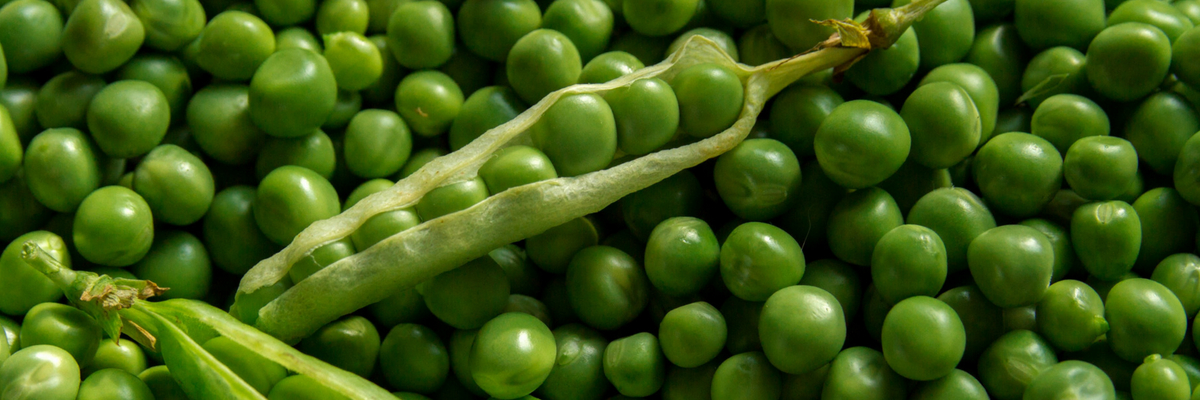
Peas : sow, to grow, harvest in vegetable garden
Contents
Pea in a nutshell
- Pea is an annual legume that belongs to the Fabaceae family.
- In the vegetable garden, it is mainly grown fresh, as garden pea and for the pod, as sugar snap pea.
- Varieties are either dwarf or climbing, with smooth seeds (hardy, they can be sown as early as autumn) or wrinkled seeds (sowing from late winter to early summer).
- Peas thrive in mild and humid climates. With their heads in the sun, they enjoy all soils, preferring light, cool, and not overly calcareous soils.
- Growing peas is simple, apart from a few pests to watch out for: birds, slugs, green aphids, thrips, and pea moth.
The word from our expert
The pea is an annual vegetable plant belonging to the Fabaceae family that has its very ancient origin in the Near East. It is one of the oldest vegetables cultivated in Europe and Asia. It was long consumed dried, crushed before cooking, while its consumption as fresh peas and as snow peas is more recent in history.
There are many varieties of peas: dwarf or climbing, producing pods filled with smooth or wrinkled round seeds when dry.
They are cooked differently depending on the varieties: after being shelled when the parchment-like pod in which they are enclosed is not edible. Among my favourite varieties to consume fresh is the dwarf ‘Merveille de Kelvedon’, a reliable choice for its sweet peas and productive plants. To harvest more from the same area, I particularly like the climbing ‘Telephone’ variety, which has very good tasting peas.
Snow peas, on the other hand, are eaten whole before the seeds are fully formed in the pod; for example, try the dwarf variety ‘Norli’‘ which produces long, tasty pods. Finally, absolutely to discover are the crunchy peas: these are fleshy snow peas, harvested at the same stage as the shelled peas, with the pod also being edible. For example, discover the ‘Sugar Lace’ variety, a semi-dwarf variety with good flavour and productivity.
In general, climbing peas are more productive but they are less early and require the installation of a structure of 1.5 to 2 metres that they can climb. Dwarf or semi-dwarf peas suffice with a few ramified branches (from 50 cm to 1 metre) as supports. Some recent varieties, whose foliage is largely replaced by tendrils, can support themselves, making the installation of supports optional and harvesting easier.
Smooth-seeded peas are resistant to spring frosts. These are very early or early varieties that can be sown very early under a Nantes tunnel, for example, but they do not appreciate excessive heat. For sowings in late spring and early summer, wrinkled-seeded varieties with a sweeter flavour are used; they tolerate heat better and offer longer harvests.
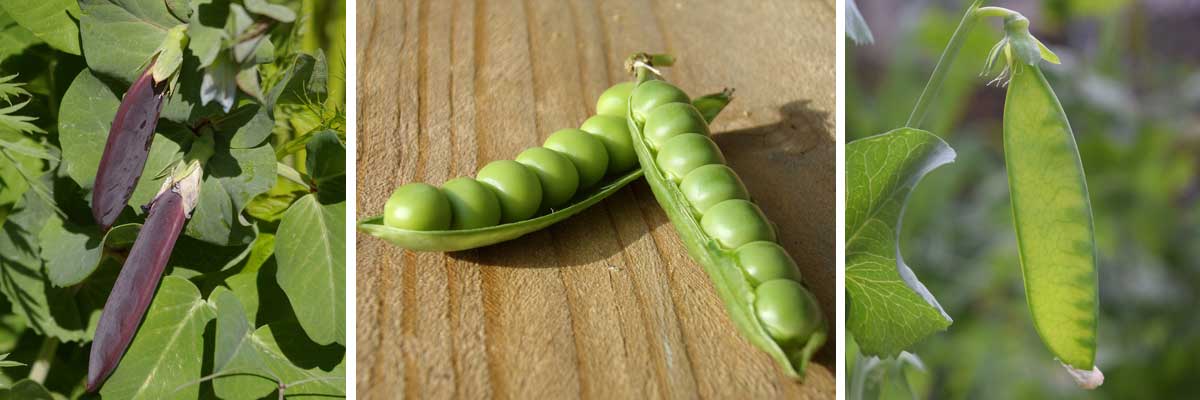
Description and Botany
Botanical data
- Latin name Pisum sativum subsp. sativum
- Family Fabaceae
- Common name Pea
- Flowering Annual
- Height 2 to 6 years
- Sun exposure Sun
- Soil type Light and cool
- Hardiness Down to -6°C
The pea is native to the Near East, with seeds dating back 6000 to 7000 years BC found in excavations in Iraq and Turkey. It was then discovered in Georgia, dating from 5000 to 4000 years BC. The pea was subsequently found in Europe (4500 to 4000 years BC), Egypt (3000 years BC), and Asia (2000 years BC). The first text mentioning the pea dates back to 300 years BC, in the book De Historia plantarum by Theophrastus.
For a long time, the pea was cultivated solely as a dry vegetable for its split pea grains. Indeed, etymologically, the name “pea” comes from the Latin “pisere“, which means “to split”. In France, it was successively named pes, then peis, and finally pois. The scientific name “Pisum” has an unknown origin. From the 13th century, it began to be consumed for its fresh grains, but it was still primarily used in purée, particularly in the food given to the poor. In England, in the 16th century, at least 11 varieties were described, including sugar peas, early peas, and wrinkled peas. In the 1600s, the mangetout pea also began to be consumed, introduced by the French ambassador in Holland. In the 18th century, the variety ‘Michaux’ was described, named after its breeder, as well as ‘Le Marly’ and ‘Le Clamart’, and in the 19th century, the varieties ‘Telephone’, ‘Fillbasket’, ‘Prince Albert’, and many local varieties were selected.
There are no fewer than seven types of peas (including forage peas, protein peas…), but in the vegetable garden and on the plate, three main categories of peas are distinguished:
- The garden pea (petit pois),
- The mangetout pea,
- The fleshy mangetout pea.
The cultivated pea, Pisum sativum subsp. sativum, is an annual herbaceous species that belongs to the Fabaceae or Leguminosae family. The dry seed can be either smooth or wrinkled, the former being less sweet and more floury than the latter. The root system is taproot and can reach a depth of one metre in sufficiently loose and deep soil. The rootlets bear nodosities, which are sites for atmospheric nitrogen fixation through a symbiosis with bacteria. The stem, cylindrical and hollow, varies in length from 50 cm to 3 m depending on the variety type (dwarf, climbing). The earliness of a variety can be determined by the appearance of flowers at the nodes on the stem. The earliest varieties flower at the fourth node, while the latest flower at the twenty-fifth node. The leaves are composed of one to four pairs of sessile leaflets, ending in tendrils that allow the plant to cling to supports. The flower, white, is papilionaceous in type and appears in the axil of the leaves, either alone or grouped in twos or threes. The flowers are closed, so fertilization is primarily self-pollinating, with only a few pollinators like megachilids and xylocopes being responsible for natural hybridizations. The fruit is a pod, exhibiting numerous morphological variations (colour, shape) depending on the varieties. The pod contains 2 to 10 seeds, which are round, smooth, or wrinkled when dry. It has a sclerified membrane (hardened), the parchment, which is absent in mangetout varieties.
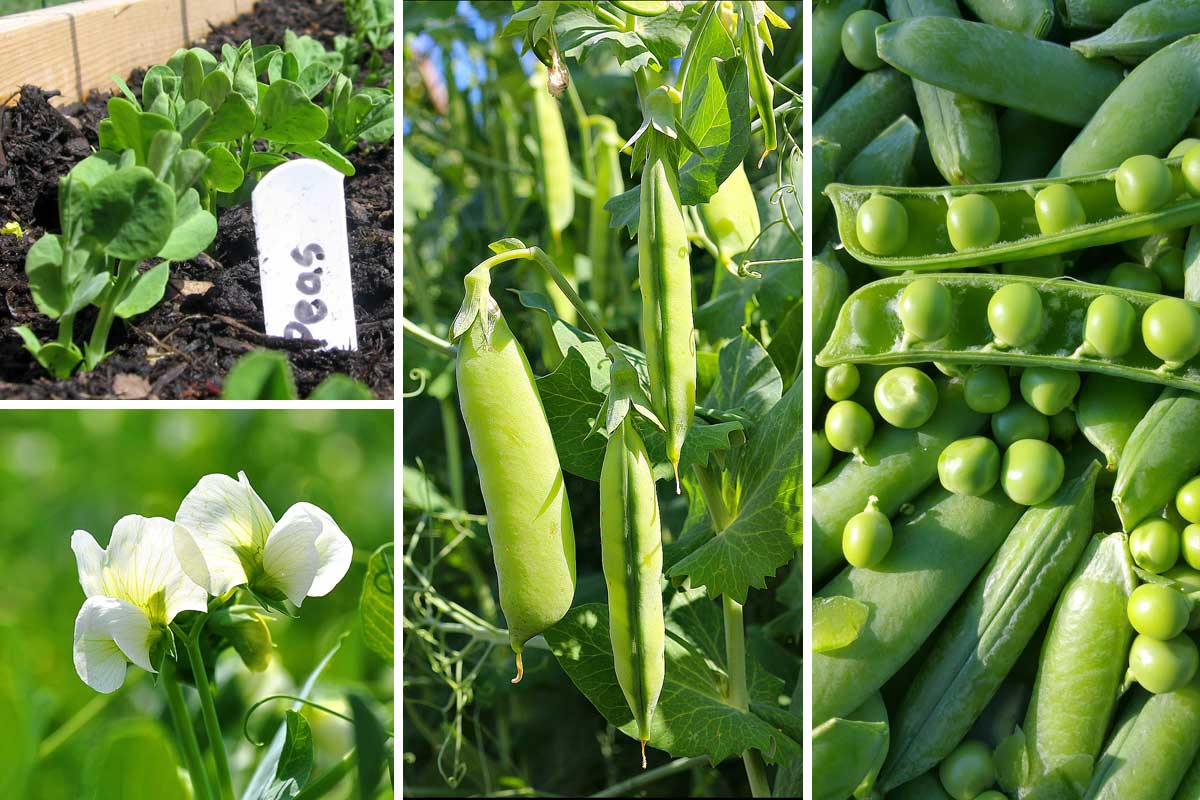
From seedling to pod containing the peas
Read also
Broad bean: to sow, to grow, to harvestPea varieties
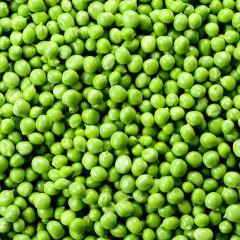
Dwarf Pea Kelvedon Wonder
- Flowering time June to September
- Height at maturity 60 cm
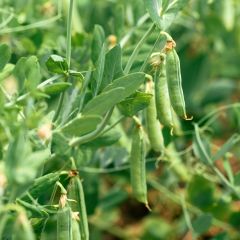
Dwarf Pea Petit Provençal - Vilmorin Seeds
- Flowering time May to August
- Height at maturity 45 cm
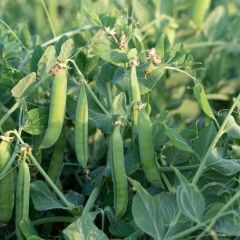
Pea Mechelse Krombek
- Flowering time May to August
- Height at maturity 1,50 m
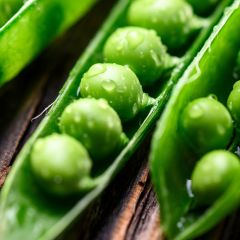
Pea Telephone with wrinkled grains - Vilmorin seeds
- Flowering time June to September
- Height at maturity 75 cm
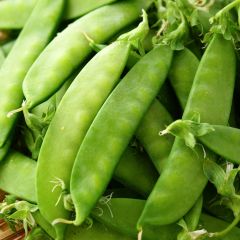
Dwarf Mangetout Pea Norli - Ferme de Sainte Marthe Seeds
- Height at maturity 55 cm
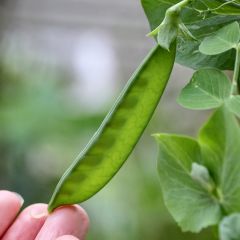
Dwarf Sugar Lace Mangetout Pea
- Flowering time May to August
- Height at maturity 75 cm
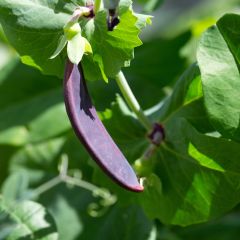
Shiraz climbing mangetout peas
- Flowering time May to August
- Height at maturity 90 cm
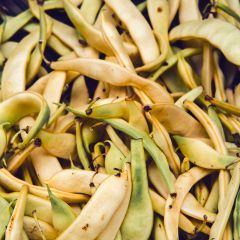
Golden Sweet Climbing Mangetout Peas
- Flowering time May to August
- Height at maturity 2 m
Discover other Pea seeds
View all →Available in 1 sizes
Available in 1 sizes
Available in 1 sizes
Available in 1 sizes
Available in 1 sizes
Available in 1 sizes
Available in 1 sizes
Available in 1 sizes
Available in 1 sizes
Available in 1 sizes
Sowing peas and sweet peas
Where and when to sow peas?
Peas thrive in mild and humid climates. They are not very demanding and grow well in all types of soil, even ordinary ones, but they prefer light, cool, and not overly chalky soils. Like most vegetable plants, they need sunlight to bear fruit.
Peas should be sown according to the type of their seeds:
- For wrinkled seed varieties, you can sow from mid-March to the end of May.
- For smooth seed varieties, you can perform an autumn sowing around October-November for a harvest by April, or sow them from mid-February to the end of April for a summer harvest.
How to sow peas?
Before sowing, you can soak the seeds for 24 hours in a little water to initiate germination.
The rows should be spaced 70 cm apart for climbing pea varieties and 35 cm apart for dwarf varieties.
In practice:
- Using a hoe, open furrows 2 to 3 cm deep,
- Sow one seed every 2 to 3 cm,
- Cover and firm down with the back of a rake,
- Water gently to avoid disturbing the seeds.
→ Learn more with Olivier in the tutorial How to sow small peas?
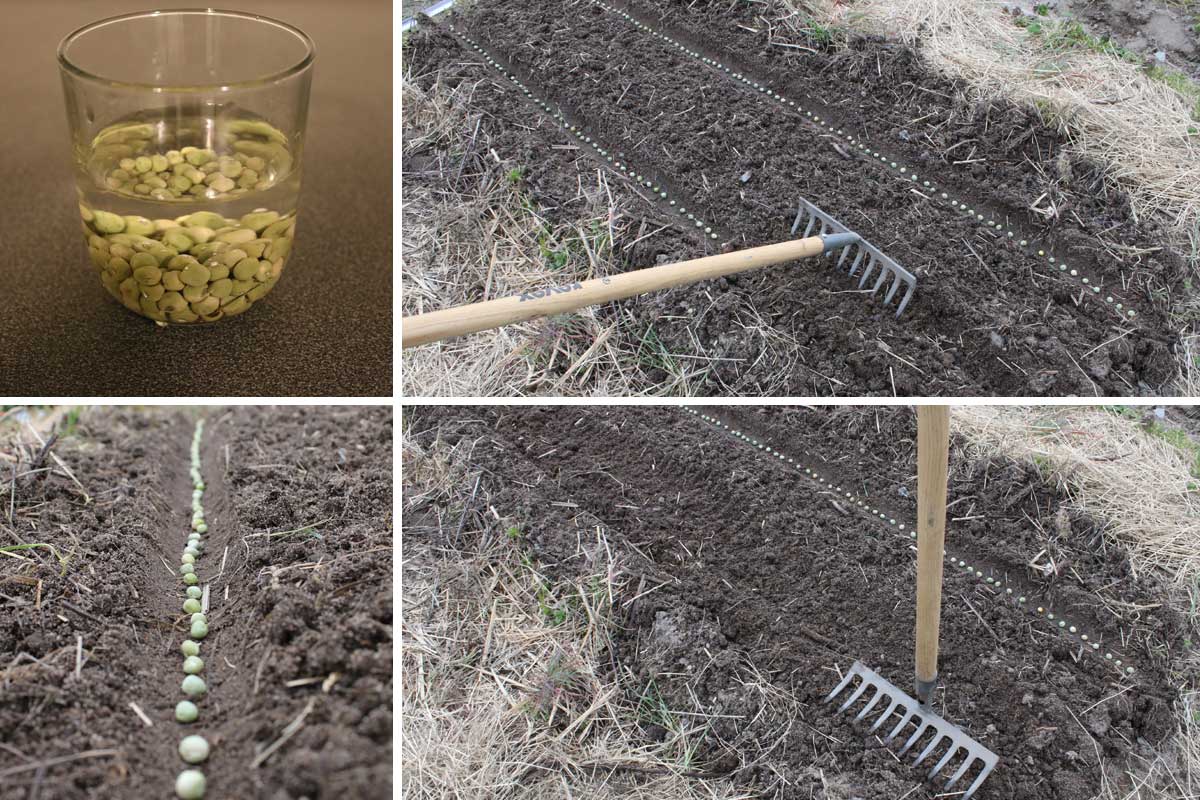
The steps to sow peas (here a dwarf variety, 35 cm between the rows) – Photographs A. Gourmelen
To grow, maintain, and companion plant peas
Peas appreciate mild and humid climates. They are not very demanding and thrive in all soils, even ordinary ones, but they prefer light, cool and not too chalky soils. Like most fruit-vegetables, they need to be exposed to sunlight to bear fruit.
When the young plants reach about fifteen centimetres, hoe and mound by burying the base of the stems a few centimetres to encourage better rooting. Then set up the supports, ramified branches (willow, hazel, privet…), filament or mesh, even for dwarf varieties which thus do not collapse. Depending on the varieties, make them taller or shorter; climbing peas can reach up to 2 m.
When the plants are developed, mulch the soil after a rainy period. Do not let the soil dry out, as peas appreciate its coolness. It requires regular moisture from sowing until flowering, until the formation of pods. In case of water stress and high heat (above 27° C), production is affected. The flowers “drop” (they dry and fall) and the pods do not reach ripeness. Similarly, in case of excess water, the flowers abort. Maintaining good moisture also helps limit thrips invasions.
Peas make good companions, as they associate well with almost all vegetables. Practically, I recommend pairing them with lettuce, carrot, turnip and radish. However, avoid planting them next to leeks, garlic, onions, shallots, fennel and other Fabaceae such as beans and broad beans.
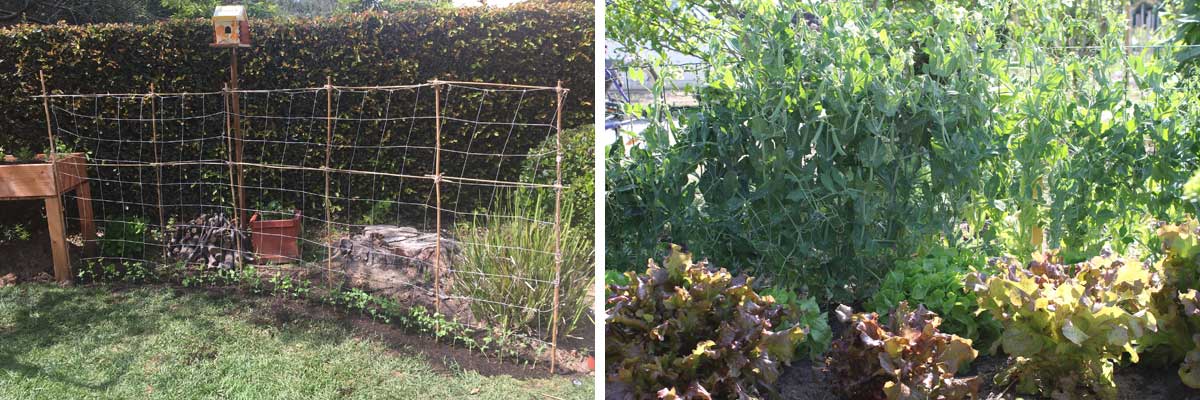
Diseases and Pests of Peas
Peas generally grow without issue. However, among the possible pests and diseases, you will find:
- birds and slugs
- green aphids, thrips
- pea moth
- powdery mildew
Birds and Slugs
Birds and slugs can cause damage to seedlings and young plants. Birds may peck at pea seeds and eat some flower buds. To protect the seedlings, place a net or grow under a Nantes tunnel for the first sowings of the year. Slugs primarily target tender tissues, meaning young plants. To combat their damage, consult our article: Slugs: 7 effective ways to fight naturally.
Green Aphids and Thrips
Green aphids will attack the leaves and pods, causing them to deform and become unappetising. Thrips, smaller than aphids, will target flowers and pods. They cause flowers to abort and deform the pods, which dry out and take on a silvery colour. To combat green aphids and thrips, spray a solution of water mixed with black soap (20% dilution).
Pea Moth
The pea moth is the caterpillar of a small butterfly, Cydia nigricana, which lays its eggs on the leaves of flowering peas. The small caterpillars enter the pods and devour the peas from the inside. Wormy pods are inedible. It is relatively difficult to combat this caterpillar as it is only briefly exposed. A spray of pyrethrum-based insecticide at the end of flowering sometimes yields good results. However, the most effective measure remains the installation of an anti-insect net during flowering.
Powdery Mildew
The most common disease is powdery mildew, a fungal disease that manifests as a white fluff on the leaves. Although it generally occurs late, around August, powdery mildew can be easily avoided by not watering the foliage and respecting planting distances. However, in the case of a severe attack, you can spray horsetail decoction.
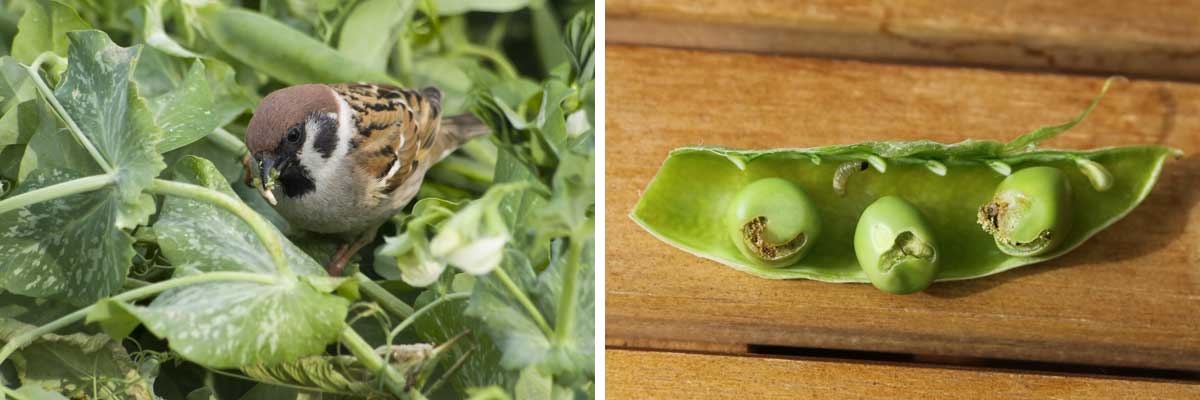
A sparrow eating a pea flower – The caterpillar of the pea moth and the damage caused to the peas
Harvest and preserve
Harvesting of peas begins between two and a half and four months after sowing, depending on the varieties. Picking should be regular and take place when, under finger pressure, the pods feel well-filled. Don’t wait too long… peas tend to harden and lose flavour as they age! The thinner the skin of the pea, the more tender it will be. The harvest of fleshy sugar snap peas or crunchy peas also occurs as soon as the pods are full.
Harvesting of sugar snap peas is done regularly as soon as the pods are formed to prevent string formation. This occurs from two months after sowing, depending on the varieties and sowing period.
Fresh peas can be stored, unpeeled, in the vegetable drawer of the refrigerator. They freeze perfectly well once blanched in boiling water.
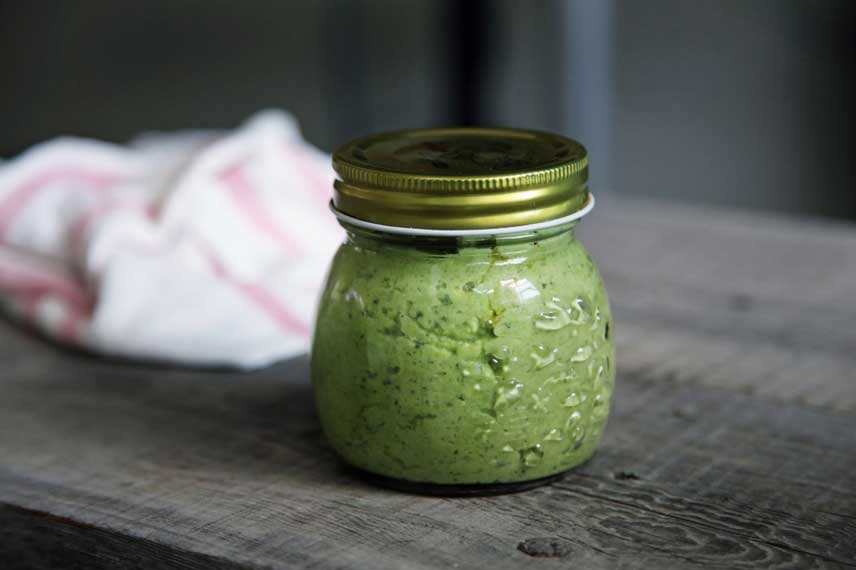
Fresh peas can also be blended and enjoyed as a spread
Uses and nutritional benefits
In the kitchen, pea can be consumed raw, in small quantities or depending on your intestinal tolerance! It is traditionally cooked to accompany meats and fish or for the preparation of delicious soups. It cooks in 5 to 10 minutes in a steamer, about 15 minutes in boiling water.
Dried pea is a fairly calorific vegetable as it is rich in slow sugars, containing a lot of fibre, protein, and iron. Garden peas are higher in water and less energetic than dried peas, but more so than most green vegetables. When fresh, it is a vegetable rich in vitamin C and a good source of vitamins B1, B9, and E.
Useful resources
Discover in our shop our range of peas and sugar snap peas.
Watch Olivier’s video on the cultivation of peas.
Check out Pascale’s tips on the cultivation of chickpeas.
The book: I Grow Peas, Broad Beans, Beans by Blaise Leclerc, published by Terre vivante, 2013.
Frequently asked questions
-
My young plants are yellowing from the base and drying out, why?
Considering that young plants yellow during their growth phase, as heat at the end of the growing season causes yellowing, which is a completely natural phenomenon. The possible causes are therefore multiple: - Heavy soil, predominantly clayey, was not sufficiently loosened at the time of sowing. - The soil drains poorly, and excess water can cause this yellowing. - The flowerbed received organic matter that was too rich in nitrogen.
- Subscribe!
- Contents
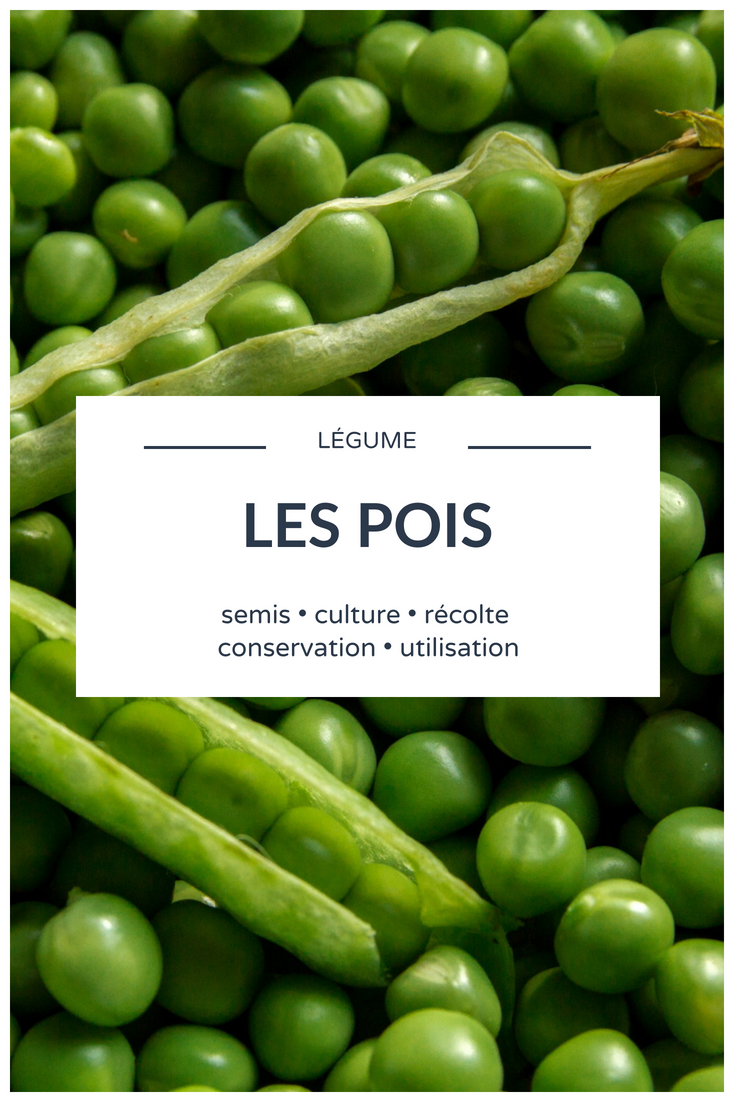
































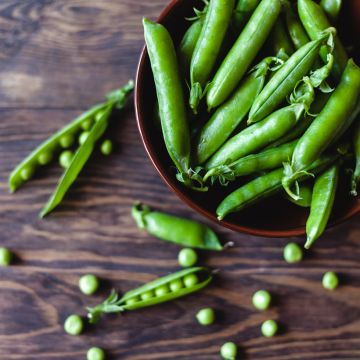
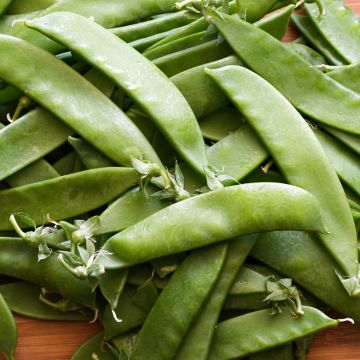
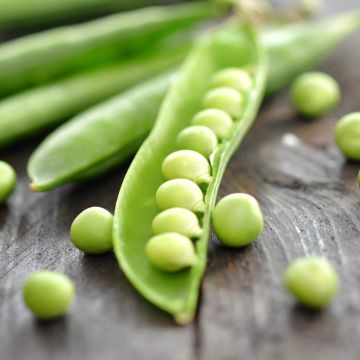

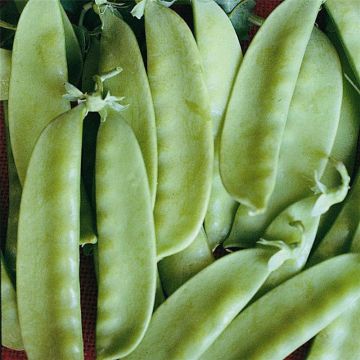
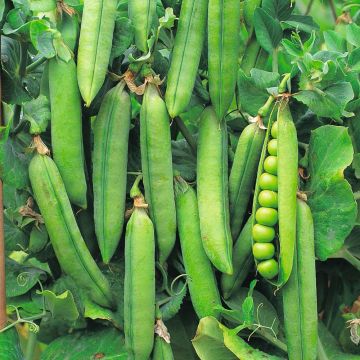
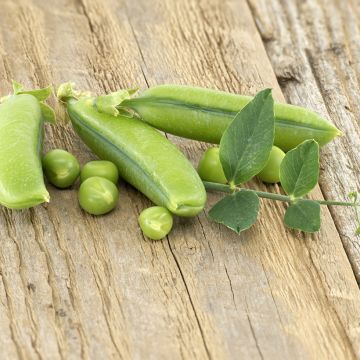
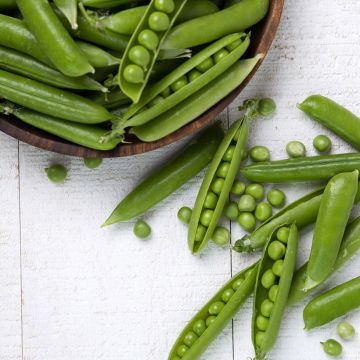
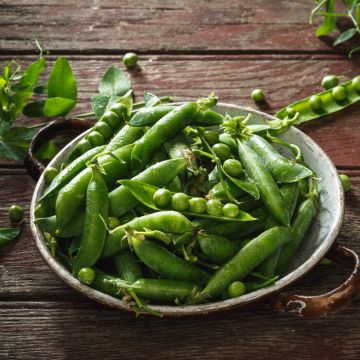
Comments